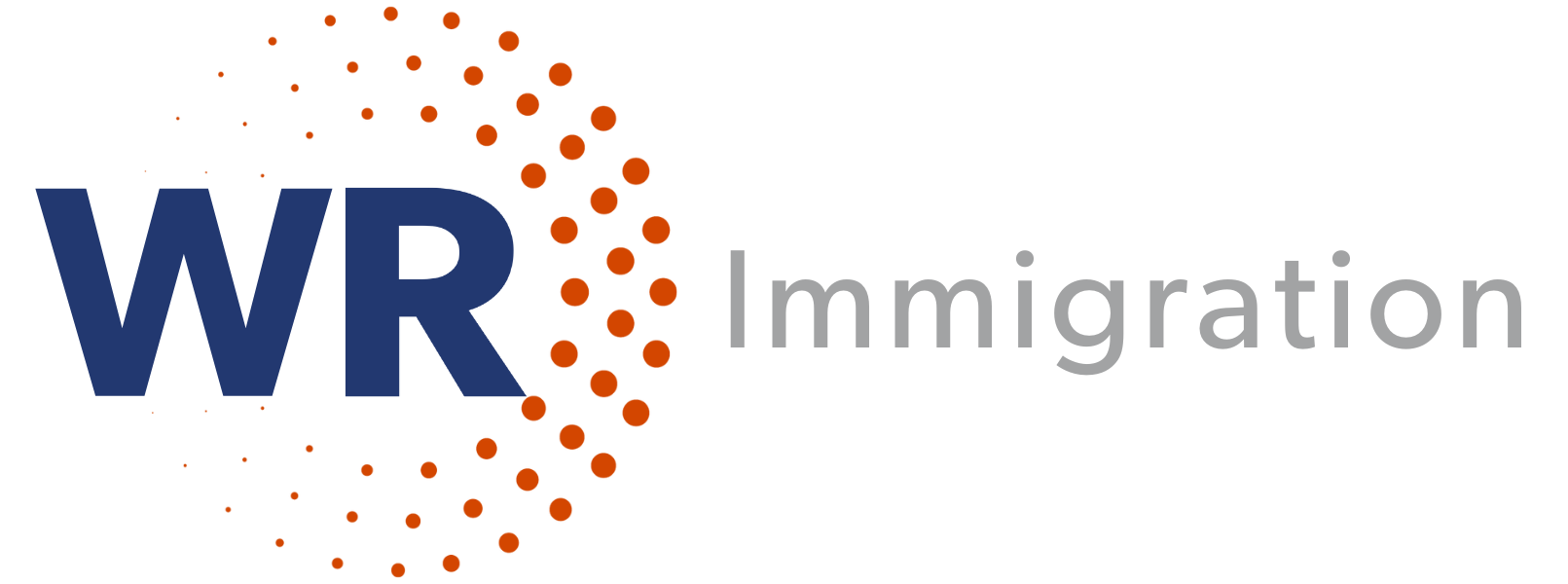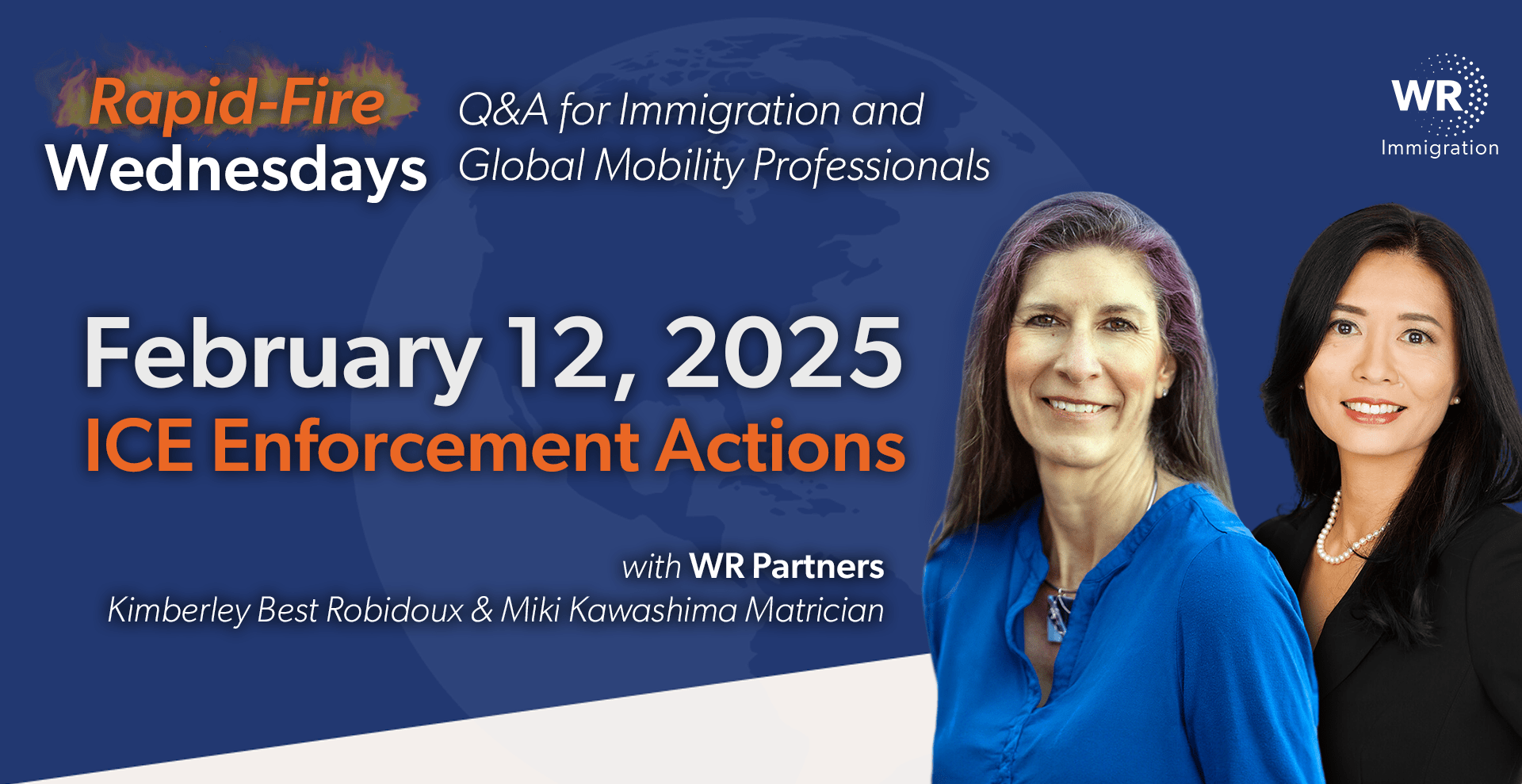The transcript version of our weekly Q&A livestream for corporate immigration professionals. Join our Immigration News Digest Newsletter for more immigration updates.
By Kimberley (Best) Robidoux & Miki Kawashima Matrician
🔥 Question: What is the significance of the H-1B cap season for employers and foreign nationals?
Response: Just as tax season is a crucial time for accountants, H-1B cap season is critical for immigration attorneys and organizations sponsoring foreign nationals for professional roles under the H-1B category. The U.S. fiscal year runs from October 1st to September 30th, and since H-1B petitions can be filed six months in advance, April 1st marks the first day for H-1B cap-subject petition filings. Due to the limited number of available “visas”, employers must file petitions and hope their candidates secure a spot through the lottery system.
🔥 Question: How has the H-1B cap process evolved in recent years?
Response: Since 2020, USCIS has conducted the H-1B cap lottery using an online registration process. Prior to this change, immigration professionals had to prepare full H-1B cap petitions and wait months for lottery results. Now, a simpler online registration occurs in March, followed by a random computer-generated selection process later that month. However, HR and global mobility professionals still have extensive preparations to manage during this season.
🔥 Question: What is the H-1B classification and who qualifies?
Response: The H-1B classification applies to professional workers in specialty occupations, which require at least a bachelor’s degree or equivalent in a specific field of study. A prime example is a software engineer, typically requiring a degree in software engineering or computer science. The H-1B often serves as a bridge for employees working under Optional Practical Training (OPT) or STEM OPT extensions, ensuring they can continue working in the U.S. once their temporary authorization expires.
🔥 Question: How does the H-1B cap registration process work?
Response: USCIS announces the H-1B cap registration period in February. This year, the window runs from March 7th to March 24th. Employers and HR professionals must have a myUSCIS account to participate. If the company representative already has a myUSCIS account that they used for the same organization last year, they can use that same login and not create a new account for the organization’s registration. Registration requires basic details, such as the beneficiary’s legal name, date of birth, country of birth, citizenship, passport details, and whether they qualify under the regular (bachelor’s) or master’s cap. Most organizations work with immigration counsel to ensure accurate and timely submissions.
🔥 Question: What happens after the H-1B registration is submitted?
Response: USCIS conducts a random lottery and announces the results by March 31st. The selection notification is sent to the MyUSCIS account holder and the attorney handling the registration. This notification allows the employer to file the H-1B petition between April 1st and June 30th. USCIS will then review the petition, assessing the job’s specialty occupation status and the beneficiary’s credentials before approving, denying, or issuing a Request for Evidence (RFE).
🔥 Question: What should employers consider for employees whose work authorization expires before October 1st?
Response: If an individual’s F-1 OPT or STEM OPT expires before October 1st, the H-1B petition must be filed before expiration to secure “cap gap” relief. This allows the employee to continue working while awaiting H-1B petition approval.
🔥 Question: Is the H-1B cap process relevant to individuals on other visa statuses?
Response: Yes. HR professionals should assess their entire workforce to determine who might benefit from an H-1B. Employees in TN status may need an H-1B for permanent residence sponsorship. L-1 visa holders who require additional time beyond their allotted L-1 period may also enter the lottery. Additionally, H-4 EAD and L-2 visa holders often apply to secure more stable work authorization.
🔥 Question: Are all H-1B holders subject to the cap?
Response: No. Individuals already in H-1B status with cap-subject employers do not need to go through the lottery for extensions or amendments. Most H-1B change of employer petitions also bypass the cap. However, individuals working for cap-exempt employers (such as universities or research institutions) must enter the lottery if they transition to a private-sector cap-subject employer.
🔥 Question: What strategies should HR professionals use to prepare for the H-1B lottery results?
Response: Employers should proactively evaluate employees’ visa status and potential challenges, such as prevailing wage issues, before submitting registrations. They should also work with immigration counsel to explore backup options for employees who may not secure an H-1B visa, ensuring continuity in workforce planning.
Send us your questions via DM or using the below link!
HR Question Submission Form | Rapid-Fire Wednesdays
See you next week!


